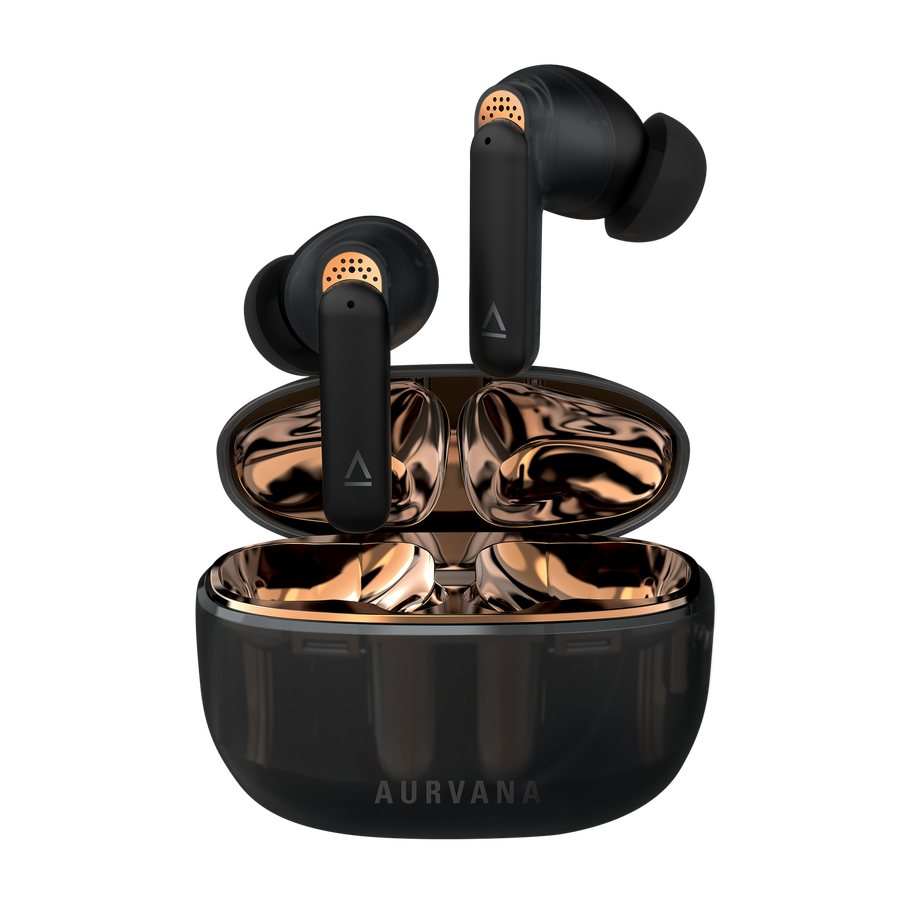Speakers in almost all earbuds, headphones, and large sound systems use 100-year-old technology built from magnets, coils, and vibrating membranes to make sound. A five year old audio startup is reinventing how speakers are make with microchips, and is commercializing a revolutionary new way of creating sound that once seemed almost science fiction: from ultrasound.
“The coil and magnet speaker has been our only means of experiencing sound our entire lives,” xMEMS Labs vice president Mike Housholder told me on the TechFirst podcast. “It was invented way back in the 1800s, perfected in the 1920s and just slowly improved ever since then … it moves the magnet that then pushes through various layers of suspension, a paper or plastic diaphragm that moves air, and generates sound fundamentally unchanged for a hundred years.”
xMEMS is replacing that traditional speaker tech with a solid state semiconductor: a chip similar in some ways to the chips that power our computers.
That’s a big deal for manufacturability: you can now make speakers like chips, in high volume, with high rates of reproducible uniformity and quality that results in exactly evenly balanced, phase-aligned audio, every time. Chip-based speakers also create a better audio experience, Housholder says, because they have much faster response time than traditional speakers with paper or plastic membranes. Under heavy load from a busy soundstage, paper or plastic has a tendency to deform and muddy audio, whereas solid-state MEMS (micro-electromechanical system) speakers maintain perfect shape.
Plus, you could theoretically wash them and not get any damage (though the other electronic parts of your earbuds, headphones, or speakers would likely not appreciate the hydrospa treatment).
“Once a solid state variant exists, it will, over time, take the majority of unit volumes for that function,” Housholder says, citing product categories like hard drives, batteries, fuseboxes, and so on.
It also opens up the possibilities to print speakers for a myriad of other use cases, giving smart machines with ChatGPT API access—for example—a voice.
There’s another key innovation that xMEMS is just releasing now that is critical, however, and it’s one that unlocks the ability to do larger speakers for home or perhaps car use with MEMS technology. That innovation is producing human audible sound from ultrasound.
The company’s new Cypress solid-state MEMS speaker replaces traditional air-pushing speaker technology with what xMEMS calls the “ultrasonic amplitude modulation transduction principle.” Essentially, it means that the new speaker produces ultrasound—sound pitched beyond human levels of hearing—and then modulates it down in human audible sound that the company says is “rich, detailed, bass-heavy, high-fidelity” audio.
The technical explanation the company shared:
“As an air pulse generator, Cypress comprises: a modulator to generate an amplitude-modulated ultrasonic wave (carrier) that faithfully follows the amplitude of the intended audio signal; and a demodulator to synchronously demodulate the ultrasonic wave, transferring the acoustic energy down to the baseband, producing the intended audible sound as a result.”
While it sounds like magic, the result is a brand new way of creating sound that the company says is more faithful to what musicians originally created, is higher-resolution, and works better with new audio format such as spatial audio.
Importantly, it will also unlock the ability to create more volume than a tiny chip-based speaker theoretically ought to be able to do, and therefore eventually expand the MEMS-based speaker from small in-ear and over-ears solutions to larger room-filling applications.
Right now, it’s well adapted to improve active noise cancellation technologies—critical to success in the market today for in-ear and over-ear solutions—with a wider bandwidth of effectiveness to high-frequency noises.
xMEMS chip-based speaker technology is currently in the market in high-end earbuds from Singularity Audio in the U.S. (retail price: $1,500), plus a high-end product from Ceramic, a company in Japan.
This week, the company announced that it is adding consumer-prices products via a partnership with Creative, the audio card, headphone, and speaker company. The Creative Aurvana Ace 2, for example, is $150, which Housholder says is “very consumer friendly.”
“As an audio company committed to delivering superior sound experiences, Creative is excited to partner with xMEMS Labs to integrate their innovative MEMS technology into our TWS products,” Song Siow Hui, the CEO of Creative, said in a statement. “By doing so, we are confident that our TWS products will stand out in the market, delivering exceptional sound quality, comfort, and style to our users.”
The Cypress noise-canceling products, however, won’t be in the market immediately. The company will be showcasing them at CES in Las Vegas in January, presumably to come to market at some point in 2024.
Read the full article here





